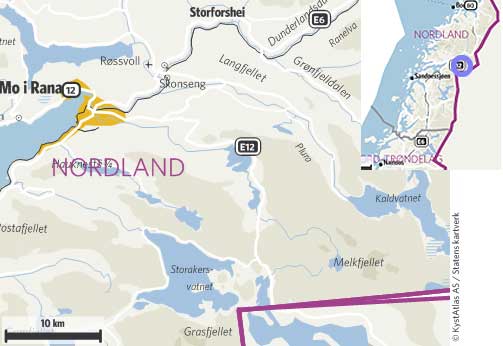| Die Bergung des am 16.8.06 tödlich verunglückten norwegischen Höhlentauchers in der Plura Höhle konnte durch ein internationales Rettungsteam (darunter Rick Stanton and Jason Mallinson) erfolgreich abgeschlossen werden.
Der Bericht zeigt einmal mehr, mit welch riesigem Ressourceneinsatz und Zeitaufwand (und damit auch Kosten) eine solche Bergung verbunden ist. |
 |
| Es zeigt ebenfalls auf, mit welchen juristischen Problemen (Haftung, Bewilligungen etc.) die Retter oder das Bergungsteam auch noch zu kämpfen haben. | |
| Informationen zur Höhle (Plura Cave): Info1 / Info 2 |
|
| Die englischen Uebersetzungen verschiedener Meldungen: | |
| Report from the Plura Recovery Operation
As most of you know by now, Ståle Tveitane from Grimstad lost his life in Plura River Cave on 16th August. He was last seen at about 75m deep and 1200m into the system by his diving partner, who returned to raise the alarm. An initial search of the air chamber later the same night confirmed that Ståle had not returned from the deep part of the cave. The assumption from that point on was that he had died. A recovery operation which involves diving as long and deep as this is a very serious business. For several days it was very unclear how a recovery could be performed and who was qualified and able to do the job. A particular problem in cave diving rescues is that diving is heavily regulated. A dive on self-contained breathing apparatus with no surface support at this depth is completely out of the envelope - the rules simply say it is not allowed. Yet the rules were obviously not written with cave diving in mind. This meant that a plan had to be developed which would satisfy the health and safety authorities that the operation could be completed in safety. The plan which was eventually adopted was to seek formal help from the British Cave Rescue Council. Two British cave divers, Rick Stanton and Jason Mallinson, were requested to assist with the deep diving operations. Both Rick and Jason have huge experience of deep cave diving and both of them had taken part in various cave rescues and recovery operations before. Mark Dougherty was appointed as surface team leader for the deep diving team. Nicklas Myrin from SSF acted as his assistant. Two more British divers and a team of French divers (two deep divers, two support divers and 2 surface support) were on stand-by. Three support divers (Terje Hammersborg, Stein Johnsen, Jonas Söderberg) came from the Oslo Fire Brigade with Ronny Arnesen as team leader. Surface support came from various different organisations - NGF, the civil defence, the fire service, the military (who supplied a diving doctor and a recompression chamber with three staff) and the police. In total about 35 people were involved. Communication to the air chamber in the system was achieved using Heyphones borrowed through the BCRC. NGF members operated the radio on the surface. An underwater decompression habitat was used to protect against the cold water. Obviously it took several days to put this plan into action and travel to the site. Three intensive days of diving were necessary to install the decompression equipment, locate and recover the body and then take out all of the equipment from the cave. Everything went very smoothly and there were no major incidents during the whole operation. Ståle has made the final journey home to his |
|
| News |
|